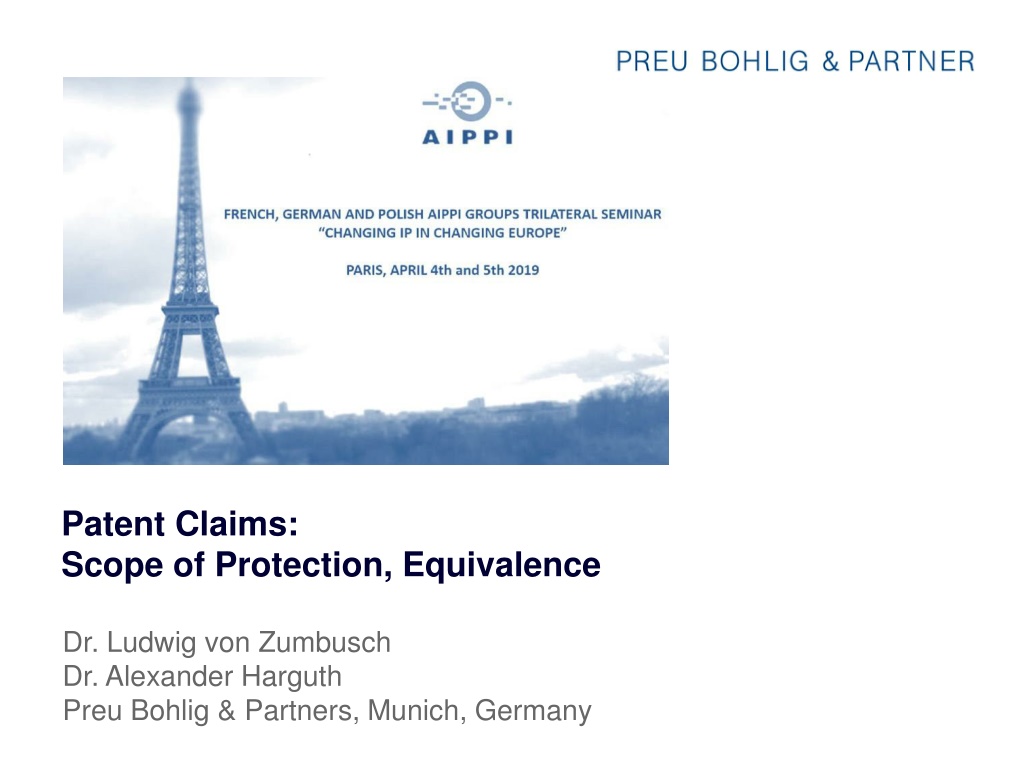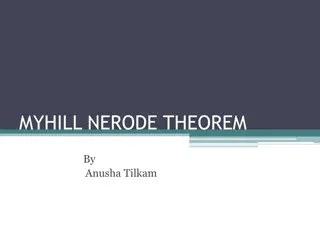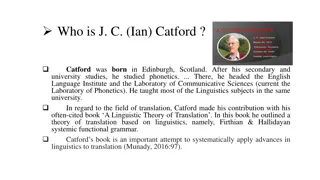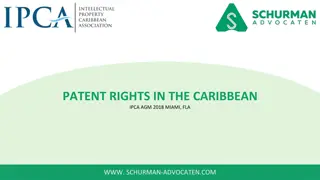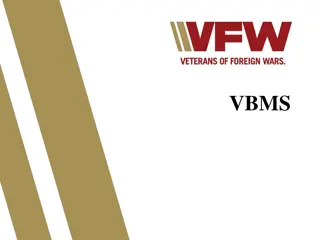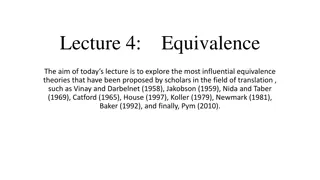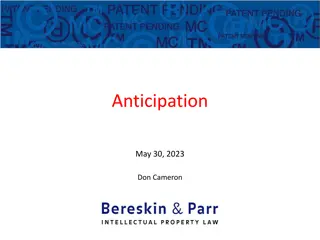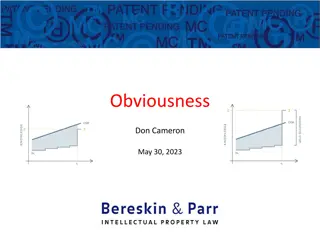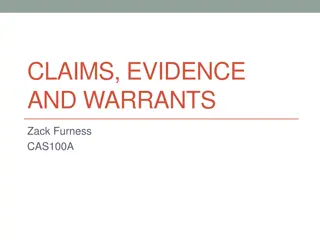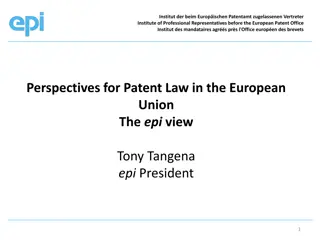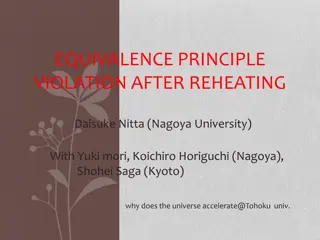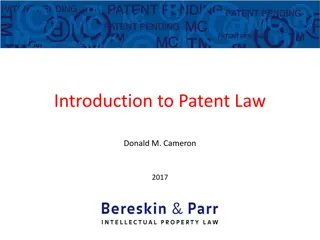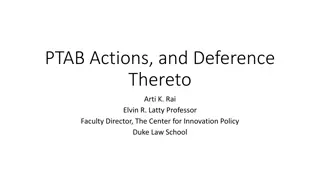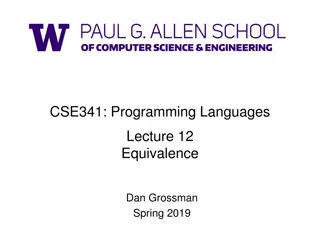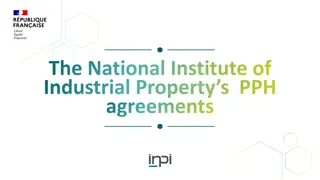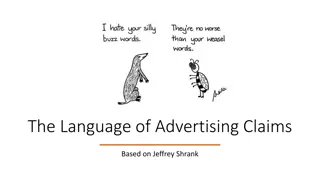Understanding Patent Claims and Equivalence Principle in European Patent Law
European patent law, specifically Art. 69 EPC and the equivalence principle, play a crucial role in determining the scope of protection conferred by a patent. The importance of patent claims, interpretation guidelines, and the concept of equivalence are highlighted, emphasizing the balance between patent holder rights and legal certainty for third parties.
Uploaded on Sep 10, 2024 | 1 Views
Download Presentation

Please find below an Image/Link to download the presentation.
The content on the website is provided AS IS for your information and personal use only. It may not be sold, licensed, or shared on other websites without obtaining consent from the author. Download presentation by click this link. If you encounter any issues during the download, it is possible that the publisher has removed the file from their server.
E N D
Presentation Transcript
Patent Claims: Scope of Protection, Equivalence Dr. Ludwig von Zumbusch Dr. Alexander Harguth Preu Bohlig & Partners, Munich, Germany
Legal Sources Art. 69 (1) EPC = 14 PatG (German Patent Statute) The extent of the protection conferred by a European patent or a European patent application shall be determined by the terms of the claims. Nevertheless, the description and drawings shall be used to interpret the claims. Protocol Art. 69 EPC Article 69 should not be interpreted as meaning that the extent of the protection conferred by a European patent is to be understood as that defined by the strict, literal meaning of the wording used in the claims, the description and drawings being employed only for the purpose of resolving an ambiguity found in the claims. Nor should it be taken to mean that the claims serve only as a guideline and that the actual protection conferred may extend to what, from a consideration of the description and drawings by a person skilled in the art, the patent proprietor has contemplated. On the contrary, it is to be interpreted as defining a position between these extremes which combines a fair protection for the patent proprietor with a reasonable degree of legal certainty for third parties. Case Law: National, European? 2
Basic Principles/Issues Right of the inventor to an adequate compensation for his contribution to innovation and sharing it with the public (incentive to do so!). Interest of the public in general and of the competitors in particular to legal certainty, i. e. scope and borders of the exclusive patent right (monopoly) must be easily and clearly recognizable from the record. Supremacy of the patent claim(s). Claim defines the subject matter and limits (the scope) of protection; as opposed to broad approach of inventive concept . To define their scope, claims must be interpreted, at any rate. Interpretation must be guided by the entire patent writ, i. e. claims, specifications and drawings. Interpretation must be done with the eyes of the average person skilled in the relevant art at the filing/priority date. 3
Equivalence Principle Art. 2 Protocol Interpretation Art. 69 EPC For the purpose of determining the extent of protection conferred by a European patent, due account shall be taken of any element which is equivalent to an element specified in the claims. German Test: Cutting knife questions (1) Same Effect (Gleichwirkung): Does the accused embodiment solve the problem underlying the claimed invention with a feature which, although modified, has objectively the same effect? (2) Obviousness of the Modified Feature (Auffindbarkeit): Would the general technical knowledge in the field (at the priority date) have taught a skilled person to practice the invention with the allegedly equivalent modification? The modified feature must be obvious for the skilled person after reading the patent specification. (3) Same Value (Gleichwertigkeit): Is the modified feature so closely tied to the essence of the expressly claimed teaching that the accused embodiment has equal value as compared to the solution provided by the invention recited in the claims? 4
Equivalence Most equivalence cases are decided on cutting knife questions (3). Again, interpretation governs: what is described but not claimed is disclaimed; what has been dropped during prosecution is out may not be reintroduced by equivalence Curbstone defense Does the allegedly equivalent solution belong to the prior art, or would it have been obvious/not inventive in view of the prior art at the filing/priority date? mainly due to separation/bifurcation system 5
Case Study Patent Claim 1, 2 Drawings A bucket (10, 61) comprising: a) generally vertical sidewalls (14) and a bottom portion (12), defiling together a bucket interior (16); b) a back face (20), constituting one of said sidewalls (14), extending substantially above the height of the bucket interior (16); and characterized in that said bucket (10, 61) is adapted for nested stacking and the bucket (10, 61) comprises at least two wheels (24) mounted to the bucket (10, 61) at the back face (20) about an axis at a bottom area thereof. 6
Case Study; Infringement? Literal/Identical infringement? Equivalent infringement Cutting knife questions? Same (technical) value? Interpretation criteria? 7
Development of the Doctrine of Equivalence under the cutting knife questions (1) Same Effect (Gleichwirkung)? (2) Obviousness of the Modified Feature (Auffindbarkeit)? (3) Same Value (Gleichwertigkeit)? 8
Cutting knife First Question (1) Same Effect (Gleichwirkung)? Does the accused embodiment solve the problem with a feature which, although modified, has objectively the same effect? The totality of the effects achieved by the elements specified in the patent claim must be achieved by the modified product = Question of circumstances 9
Cutting knife Second Question (2) Obviousness of the Modified Feature (Auffindbarkeit): Was it obvious that the modified feature has the same effect? Special problem: How to deal with alternatives which were not available at the filing/priority date? If the alternative is obvious to the skilled person thanks to the technical knowledge available at the priority date: Uncritical general If the alternative was not identifiable by the skilled person with knowledge available at the priority date, but is obvious from the general technical progress after the priority date: Critical Example/Appeal Court D sseldorf, Judgment, 7.7.2016 I-2 U 5/14: The patent-in-suit concerned a method of reducing emissions from diesel engines using dissolved cerium. The attacked embodiment used stabilized cerium nanoparticles instead. On the priority date of the patent-in-suit, nanotechnology was still in its infancy. Cerium nanoparticles were not yet available to the skilled person. The Appeal Court D sseldorf ruled for patent infringement. 10
Cutting knife Third Question (3) Same Value (Gleichwertigkeit)? Was the skilled person able to find the alternative element by considerations oriented to the teaching of the patent claim as having the same effect? No, in case of a selection decision = I do it my way for whatever reason - (BGH - Occlusion Device - X ZR 16/09) (I) Cases where the modified means/variant is disclosed in the patent, but it is not claimed: Example: Two means with the same effect are disclosed in the patent specification but only one is included in the patent claim. A modified means may not represent an equivalent, although disclosed or at least detectable by the person skilled in the art, if the reader of the patent specification must assume that, for whatever reason , it should not be protected.(BGH - Occlusion Device - X ZR 16/09) (II) What about cases where the modified means/variant is not disclosed in the patent specification? 11
BGH Pemetrexed BGH X ZR 29/15 Asserted Patent: Use of pemetrexed disodium in the manufacture of a medicament Accused containing dipotassium active substance. drug pemetrexed as = an for use in combination therapy for inhibiting tumor growth Accused Product: Claim: Pemetrexed disodium + Vitamin B12 to inhibit the growth of tumors Drug containing pemetrexed dipotassium as an active substance. The patent mentions five different substances as examples of antifolates, including pemetrexed disodium, which is mentioned in the claim. Pemetrexed disodium and pemetrexed dipotassium both belong to the group of antifolates Disclosed Categorie Antifolates 12
BGH Pemetrexed BGH X ZR 29/15 Appeal Court D sseldorf: No direct or equivalent infringement BGH confirms in Pemetrexed the principles established in Occlusion Devise No direct infringement, but equivalent infringement is possible Accused medicament pemetrexed dipotassium active substance. product containing = No concrete selection decision: Category does not disclose individual compounds belonging to the category, because they are not explicitly mentioned in the patent. as an Important aspects for the doctrine of equivalence are the reasons of claim limitations occurred in the course of the grant proceedings: Claim: Pemetrexed disodium + Vitamin B12 to inhibit the growth of tumors - Did they occur in order to distinguish the claimed teaching from the state of the art (i.e. material reasons)? Disclosed Categorie Antifolates - or due to formal reasons, such as clarity/lacking disclosure? 13
Prior art defense (Formstein defence) Artefact of the split German proceedings The defense is admissible when the variant product would not be patentable under Art. 52 (1) EPC (Federal Court of Justice, 29 April 1986, [1987] IIC 795 Formstein) 14
Landmark Decisions in the Context of Claim Construction BGH GRUR 1999,909 Spannschraube BGH GRUR 2002, 519 (521) Schneidmesser I; GRUR 2002, 523 (524) Schneidmesser II BGH GRUR 2006, 311 Baumscheibenabdeckung BGH GRUR 2007, 410 Kettenradanordung BGH, Urteil vom 12.05.2015, X ZR 43/13 Rotorelement OLG D sseldorf, I-2 U 29/12 - WC-Sitzgelenk BGH, GRUR 2011, 701 Okklusionsvorrichtung BGH, GRUR 2012, 45 Diglycidverbindung BGH, GRUR 2014, 852 Begrenzungsanschlag BGH GRUR 2015, 361 - Kochgef BGH, X ZR 29/15 Pemetrexed/OLG M nchen, Endurteil v. 18.05.2017 6 U 3039/16/UK, Supreme Court Judgment July 12, 2017 BGH, GRUR 2016, 1254 V-f rmige F hrungsanordnung BGH,- GRUR 2016, 169; X ZR 74/14 Luftkappensystem 15
